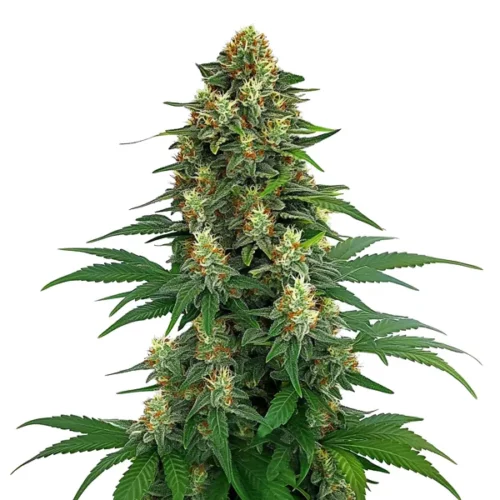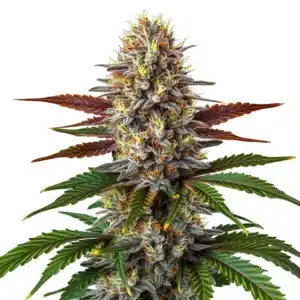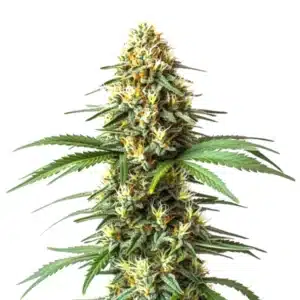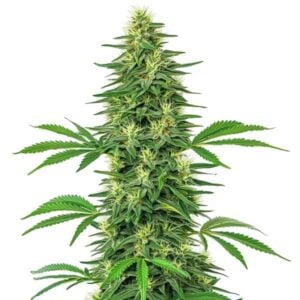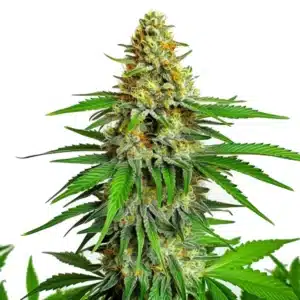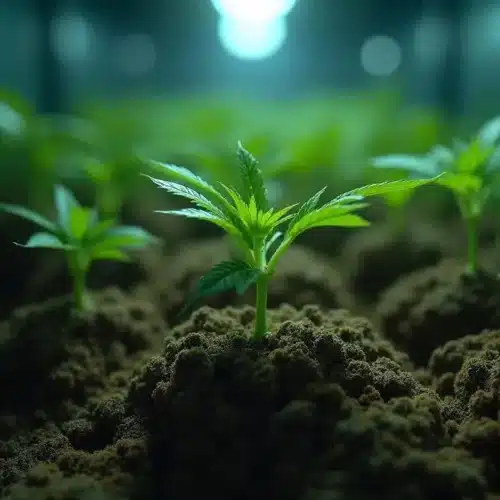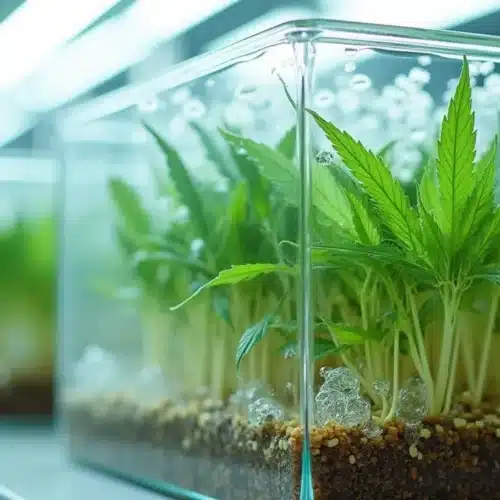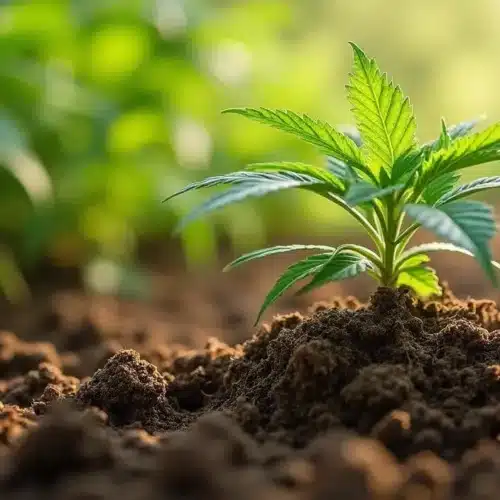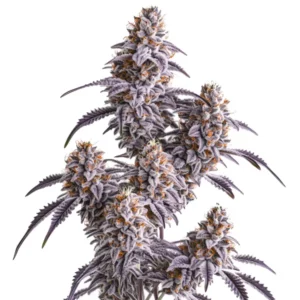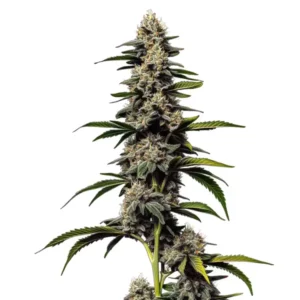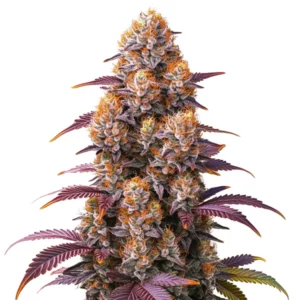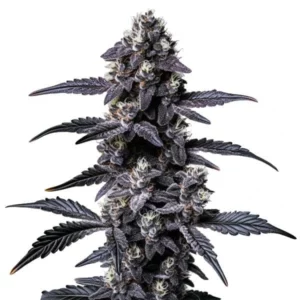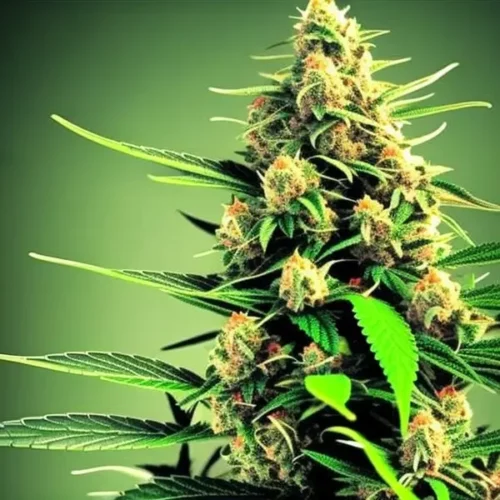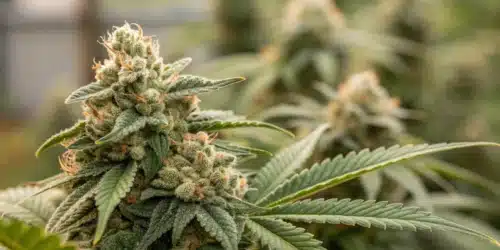Tangie Weed Strain Description
The Tangie Strain is one of the most celebrated cannabis strains, loved for its vibrant citrus flavors and uplifting effects. This Tangie Weed Strain stands out due to its dominant Sativa genetics, which offers a balance of calm and happiness. Originating from the legendary cross between California Orange and Skunk #1, Tangie brings out the best of its lineage, providing a refreshing, earthy, and sweet experience.
Tangie Weed Strain is known for its robust structure, producing dense buds with a frosty coating of trichomes. These buds are not only a sight to behold but also pack a punch with their potency. The buds typically display vibrant shades of green, often accompanied by orange hairs. When looking for reliable Tangie strain info, it’s important to note that its high THC levels—ranging between 19% to 22%—make it a popular choice among recreational users seeking a potent, yet calming high.
Recommended Strains
Tangie
 THC: 19% - 22%
THC: 19% - 22% Type of seed: Feminized
Type of seed: Feminized Phenotype: Mostly Sativa
Phenotype: Mostly Sativa Day to flower: 9 - 10 weeks
Day to flower: 9 - 10 weeks
The aroma of Tangie is as bold as its flavors, filling the air with citrusy and sweet notes, complemented by subtle earthy undertones. Its terpene profile, dominated by Limonene and Alpha-Pinene, enhances these distinct characteristics. Whether you’re a seasoned cannabis enthusiast or a beginner, the experience of enjoying Tangie Strain is truly unforgettable.
Promos & Deals
Environmental Requirements for Growing Tangie Weed Strain
To successfully cultivate Tangie Weed Strain, it is important to create the perfect environment for its growth. As a Sativa-dominant strain, Tangie thrives in warm, sunny climates that mimic its natural outdoor environment. Ideally, temperatures should be kept between 70-80°F (21-27°C) during the day, with slight drops at night. These conditions help the plant to flourish and avoid stress.
Humidity control is also crucial when growing Tangie, as high humidity levels can lead to mold development, particularly in the dense buds. Aim to maintain humidity between 40% and 50% during the flowering stage. For indoor cultivators, it is important to use a high-quality ventilation system to ensure proper airflow, which helps to reduce the risk of mold and mildew.
When it comes to lighting, Tangie responds well to powerful LED grow lights or HPS lamps. During the vegetative phase, the strain requires 18-20 hours of light per day, followed by a 12-hour light/12-hour dark cycle during the flowering stage to trigger bud production. Tangie’s outdoor cultivation requires ample sunlight exposure, making it a perfect candidate for regions with long, sunny summers.
Setting Up The Growing Cannabis Space
Indoor Cannabis Cultivation
Indoor growers will benefit from setting up a well-organized and efficient grow space for the Tangie Weed Strain. Choose a spacious grow tent or room with reflective materials like Mylar sheets to enhance light distribution. Ventilation is key, so ensure your grow space is equipped with exhaust fans and carbon filters to maintain airflow and control odors. Tangie plants can grow tall, so make sure there’s enough vertical space in your setup to accommodate their height.
Soil growers should choose a high-quality, organic soil rich in nutrients to support Tangie’s vigorous growth. Alternatively, hydroponic systems can be used to maximize growth speed and yield, though they require more technical knowledge. When using soil, maintain a pH level of 6.0-6.5 to ensure nutrient uptake and avoid deficiencies. Additionally, choose pots with adequate drainage to prevent root rot, as overwatering can be detrimental to Tangie’s development.
Outdoor Cannabis Cultivation
When cultivating Tangie Weed Strain outdoors, the plant thrives in warm and sunny climates with plenty of direct sunlight. Consider placing your plants in large fabric pots to allow for easy movement and to provide better root aeration. The soil should be well-draining and rich in organic matter to support the plant’s nutritional needs. Adding compost or organic fertilizers will help maintain the soil’s health throughout the growth cycle.
Outdoor growers should also consider using stakes or trellises to support the plant as it grows taller and the buds become heavier. This not only prevents branches from snapping but also promotes better airflow between the branches, reducing the risk of mold or mildew. Tangie Weed Seeds can benefit from light pruning to remove lower branches and leaves that receive minimal sunlight, ensuring that the energy is directed to the upper, more productive areas of the plant.
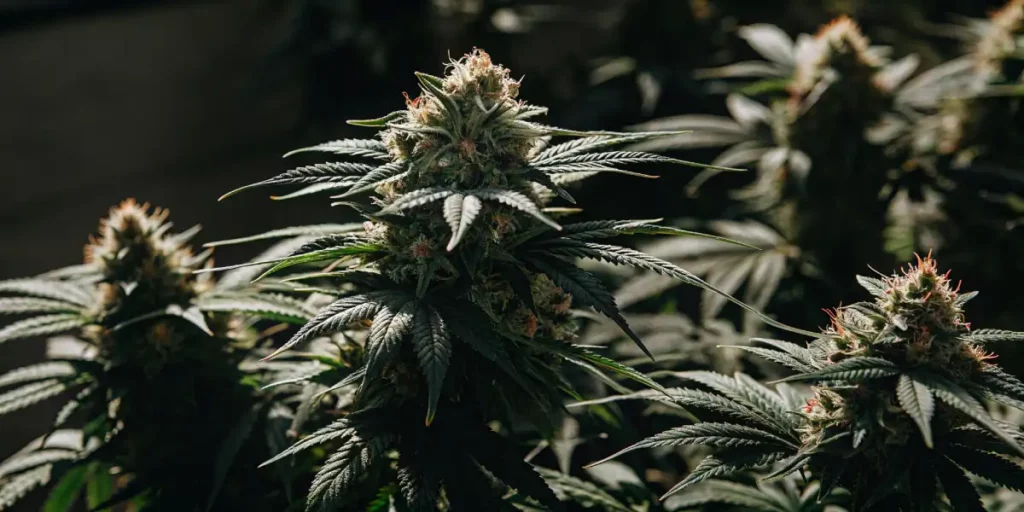
Propagation and Germination of Tangie Weed Strain
Germinating your Tangie Weed Strain seeds is the first and most critical step in ensuring a successful cultivation process. Start by selecting high-quality feminized Tangie seeds from a reliable seed bank. This will ensure you avoid male plants and focus all your efforts on nurturing productive female plants.
To begin germination, soak the seeds in a glass of distilled water for 24 to 48 hours, or use the damp paper towel method. Maintain a warm temperature between 70-85°F (21-29°C) to encourage sprouting. After the seeds have sprouted and taproots have emerged, carefully transfer them to small pots filled with lightly moistened soil or starter plugs. Ensure the growing medium is well-draining to prevent waterlogging.
Place the pots in a warm, humid environment with indirect light. A humidity dome can help maintain moisture and warmth during the early stages. After the seedlings have developed their first true leaves, they can be moved to larger pots or directly into your grow space. Be cautious when handling the seedlings during this stage, as they are delicate and can be easily damaged.
Vegetative Phase of Tangie Weed Strain
During the vegetative phase, Tangie Weed Strain requires ample light and nutrients to grow strong and healthy. Provide the plants with 18-20 hours of light per day using high-quality LED or HPS grow lights for indoor setups. Outdoor plants should be placed in a location that receives full sunlight for most of the day. The vegetative phase is characterized by rapid growth, with plants developing their main stems and leaves during this time.
Nutrient-wise, Tangie benefits from a fertilizer rich in nitrogen (N) during the vegetative stage to promote lush, green growth. It’s essential to follow a regular feeding schedule, ensuring that the plants receive the right balance of nutrients without overfeeding, which can lead to nutrient burn. Additionally, always monitor the pH of your growing medium to ensure that nutrients are being absorbed properly.
Training techniques such as low-stress training (LST) or topping can be used during the vegetative phase to control the plant’s height and encourage more lateral growth. This helps create a fuller canopy, allowing more light to reach the bud sites and ultimately increasing your yield. Regular pruning is also recommended to remove any dead or damaged leaves, promoting better airflow and light penetration.
Flowering Phase of Tangie Weed Strain
As Tangie enters the flowering phase, it transitions from vegetative growth to the production of buds. This stage is triggered by adjusting the light cycle to 12 hours of light and 12 hours of uninterrupted darkness. The flowering phase typically lasts between 8 and 10 weeks, though some phenotypes may take slightly longer to fully mature. It’s during this stage that the characteristic citrus and sweet aroma of Tangie intensifies.
To support the plant’s bud development, switch to a flowering-specific nutrient formula that is higher in phosphorus (P) and potassium (K) and lower in nitrogen (N). This helps the plant focus its energy on producing resinous, potent buds. Monitor your plants closely during this time for signs of nutrient deficiencies or toxicities, and adjust the feeding schedule as needed.
It’s also important to keep a close eye on temperature and humidity levels during the flowering phase. Maintain temperatures between 65-75°F (18-24°C) and humidity levels around 40-50% to reduce the risk of mold or bud rot. The buds of Tangie can become quite dense and heavy, so providing support with stakes or trellises can prevent branches from snapping under the weight of the flowers.
Cannabis Fertilization and Nutrition
Proper fertilization is essential to ensure the healthy growth and development of your Tangie OG Strain plants. During the vegetative phase, focus on providing a nutrient solution rich in nitrogen, as this supports robust leaf and stem development. As the plant transitions to the flowering stage, shift to a phosphorus- and potassium-rich formula to encourage bud growth.
Regular feeding is important, but over-fertilizing can lead to nutrient burn. Always follow the recommended feeding schedules provided by your nutrient manufacturer, and watch your plants for signs of deficiencies or excesses. Yellowing leaves, for example, can indicate a nitrogen deficiency, while nutrient burn typically manifests as browning on the tips of leaves.
During the last few weeks of the flowering phase, it’s recommended to flush the plants with plain water to remove any excess salts or nutrients that have built up in the soil. This helps improve the flavor and smoothness of the final harvest by ensuring that no residual nutrients remain in the buds.
Pest And Disease Control for Cannabis Growing
Even though Tangie Weed Strain is relatively resilient, it can still be vulnerable to pests and diseases, which can threaten the health and yield of your plants. Implementing proper pest and disease control methods is essential to ensure the successful growth of your Tangie plants.
Prevention:
Start by maintaining a clean growing environment, whether indoors or outdoors. Ensure good airflow to reduce the risk of mold and mildew. Regularly inspect your plants for signs of common pests such as spider mites, aphids, and whiteflies. The earlier you detect these pests, the easier it is to manage them. Beneficial insects, such as ladybugs and predatory mites, can also be introduced into your grow space to keep pest populations under control.
Another preventive measure is using neem oil or insecticidal soaps. These organic solutions are effective in repelling pests without harming your plants or the environment. When growing indoors, a properly sealed grow room with an air filtration system can help minimize the risk of pests and diseases entering your space.
Corrective Actions:
If you notice pests on your plants, the first step is to isolate the affected plants to prevent the infestation from spreading. For common pests like spider mites and aphids, neem oil sprays or insecticidal soaps can help eliminate them. Ensure you follow the product instructions carefully to avoid damaging your plants.
For fungal diseases like powdery mildew or botrytis (bud rot), maintaining low humidity levels and good airflow is key to prevention. If fungal infections occur, remove the affected plant parts immediately and consider using an organic fungicide to treat the remaining plants. Always dispose of infected material away from your grow space to avoid reintroducing pathogens.
Harvesting and Curing for Cannabis Growing
Harvesting your Tangie Weed Strain at the right time ensures maximum potency and flavor. The best way to determine when your Tangie plants are ready to harvest is by examining the trichomes using a magnifying tool. When the trichomes are mostly milky white with some amber hues, it’s the optimal time to harvest, as this indicates a balanced cannabinoid profile and the peak terpene production.
To harvest, use clean, sterilized pruning shears to cut the branches from the plant. Trim off the larger fan leaves but leave the sugar leaves intact for the drying process. Hang the branches upside down in a dark, well-ventilated room with temperatures around 60-70°F (15-21°C) and humidity levels between 50-60%. Proper airflow is essential to avoid mold development during the drying process.
Drying typically takes 7-14 days. After the buds have dried and the stems snap rather than bend, it’s time to start the curing process. Place the dried buds in airtight glass jars, filling them about 75% full to allow some air circulation. Store the jars in a cool, dark place, and open them daily for the first week to release excess moisture. Over time, reduce the frequency of opening the jars to once every few days.
Curing improves the flavor and aroma of Tangie by allowing the terpenes to fully develop. A proper cure usually takes 2-4 weeks, but some growers prefer to cure their buds for even longer to enhance the smoothness and potency of the final product.
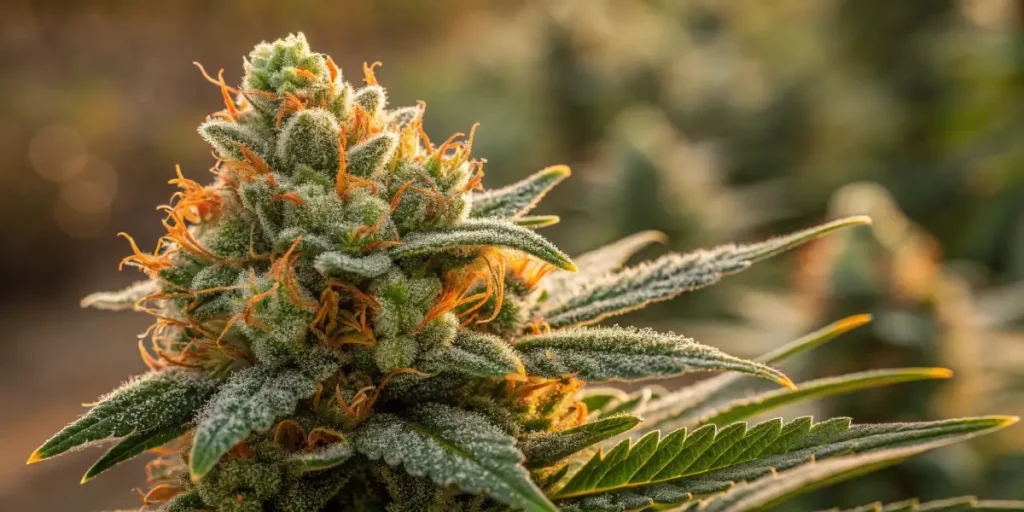
Is Tangie Weed Strain Indica or Sativa?
The Tangie Weed Strain is predominantly Sativa, offering energizing and uplifting effects. With a genetic profile leaning heavily toward Sativa, Tangie is ideal for daytime use, providing a clear-headed, focused high that is perfect for creative tasks or social situations. However, it also contains just enough Indica to offer a calming, relaxed body effect without causing sedation.
This Sativa dominance is reflected in the plant’s growth patterns as well. Tangie tends to grow tall and produce long, slender leaves typical of Sativa varieties. The strain’s uplifting effects, combined with its rich citrus flavors, make it a favorite among cannabis connoisseurs who appreciate a balanced high that doesn’t leave them feeling couch-locked.
In terms of medicinal use, Tangie’s Sativa effects are known to help with fatigue, depression, and stress, while its minor Indica influence can assist with mild physical discomfort. Overall, Tangie delivers a well-rounded experience that appeals to both recreational and medical users alike.
Advantages of Growing Tangie Weed Seeds
Growing Tangie Weed Strain offers several benefits that make it an attractive option for both beginner and experienced growers:
- Potent Effects: Tangie boasts THC levels between 19% and 22%, providing a powerful, uplifting high that is popular among recreational users.
- Distinct Flavor Profile: The bold citrus, sweet, and earthy flavors of Tangie make it stand out in any cannabis garden, offering a memorable smoking experience.
- Fast Flowering Time: Tangie has a relatively short flowering time of 8-10 weeks, making it a quicker-growing Sativa strain compared to others on the market.
- Resilient Plant: Tangie is known for its resilience to common pests and diseases, making it a low-maintenance option for cultivators.
- Versatile Growing Options: Whether grown indoors or outdoors, Tangie adapts well to a variety of growing environments, making it a flexible choice for different setups.
Disadvantages of Growing Tangie Weed Strain
- Height Management: As a predominantly Sativa strain, Tangie can grow quite tall, requiring additional space and support for indoor cultivators.
- Humidity Sensitivity: Tangie’s dense buds are susceptible to mold if the humidity is too high during the flowering stage. Proper ventilation and humidity control are essential.
- Training Required: To maximize yields, growers may need to implement training techniques like low-stress training (LST) or topping to manage the plant’s height and improve light penetration.
- Moderate Yields: Although Tangie produces high-quality buds, its yields may not be as abundant as some other commercial strains, which could be a disadvantage for growers seeking maximum production.
Why Buy Tangie Weed Strain
If you’re looking for a strain that combines energizing effects with a delicious flavor profile, Tangie Weed Strain should be at the top of your list. Here’s why:
1. Potency: With THC levels reaching up to 22%, Tangie offers a potent and long-lasting high that appeals to both recreational users and those seeking medicinal benefits.
2. Unique Terpene Profile: Tangie’s terpene profile is dominated by Limonene and Alpha-Pinene, giving it a citrus-heavy aroma and flavor that stands out from other strains. The refreshing citrus notes provide a delightful sensory experience.
3. Medical Benefits: Tangie is popular among medical cannabis users for its ability to relieve stress, anxiety, and fatigue. The uplifting and euphoric effects make it a great choice for daytime use without inducing sleepiness.
4. Growing Versatility: Tangie can be successfully grown indoors or outdoors, making it a flexible option for growers with varying experience levels. Its relatively short flowering time and resilience to pests make it a reliable choice for growers.
5. Availability: Tangie Weed Strain is widely available from reputable seed banks, making it easy to source high-quality seeds for your next cultivation project.
Problems in Cultivating Tangie Weed Strain
While Tangie is generally easy to grow, there are some potential issues to watch out for:
1. Overstretching: As a predominantly Sativa strain, Tangie tends to grow tall, especially during the flowering stretch. Growers need to anticipate this and provide enough vertical space or use training techniques like LST to control its height.
2. Mold Risk: Tangie’s dense buds can trap moisture, leading to mold and bud rot if the humidity is not properly controlled during the flowering stage. Ensure proper ventilation and keep humidity levels low to mitigate this risk.
3. Nutrient Sensitivity: While Tangie is a resilient strain, it can be sensitive to nutrient imbalances, particularly during the flowering phase. Monitor your plants closely for any signs of nutrient deficiencies or toxicities and adjust feeding schedules accordingly.
4. Light Requirements: Tangie plants require strong, consistent light to reach their full potential. Indoor growers need to ensure their grow lights are powerful enough to support the plant’s growth during both the vegetative and flowering stages.
By anticipating these challenges and carefully monitoring your plants, you can successfully grow Tangie Weed Strain and enjoy a bountiful harvest of this unique and flavorful cannabis.
Similar Strains to Tangie Weed Strain
If you love Tangie Weed Strain, there are several other cannabis strains that offer similar characteristics in terms of flavor, effects, and growing requirements. Here are three popular strains you might also enjoy:
Orange Bud: is another citrus-heavy strain that shares some of the vibrant flavor notes found in Tangie. It is an Indica-dominant hybrid that offers relaxing effects without overwhelming sedation. With high levels of Limonene, Orange Bud delivers a zesty, orange flavor that pairs perfectly with its calming and euphoric high. This strain is also known for its relatively easy cultivation, making it a good choice for beginner growers.
Clementine: is a Sativa-dominant strain that boasts a similar flavor profile to Tangie, with strong citrus and sweet undertones. It provides an energizing and uplifting high, making it ideal for daytime use or creative activities. Like Tangie, Clementine can grow quite tall, so it may require height management in indoor grow setups. This strain is favored by those seeking a clear-headed, focused experience.
Super Lemon Haze: is a popular Sativa-dominant hybrid that shares Tangie’s refreshing citrus flavor profile. Known for its high THC levels, which often exceed 20%, Super Lemon Haze offers an energetic and euphoric high, making it perfect for daytime use. It has a slightly longer flowering time, but the large, resinous buds make it worth the wait. This strain is also a favorite among growers due to its high yields and resilient growth.
Tips for Professional Growers
For experienced cultivators looking to optimize their Tangie Weed Strain grows, here are a few advanced techniques and tips to help you achieve maximum yields and potency:
Optimize Light Intensity
Tangie plants thrive under intense light, especially during the flowering phase. Professional growers often use high-quality LED grow lights or double-ended HPS lamps to ensure the plants receive enough light for optimal bud development. Monitor the distance between your grow lights and the canopy, as keeping the lights too close can cause heat stress, while too much distance can result in light deprivation.
Use Advanced Training Techniques
Professional growers often use techniques like Screen of Green (ScrOG) or super cropping to control the height and shape of Tangie plants. These methods help maximize light exposure to all parts of the plant, resulting in larger and more even bud development. ScrOG involves training the plants to grow horizontally along a screen, while super cropping involves gently bending the branches to redirect growth and improve airflow.
Monitor pH and Nutrient Levels Closely
Maintaining the correct pH level is critical for Tangie’s nutrient uptake. For soil grows, aim for a pH range of 6.0-6.5, and for hydroponics, keep it between 5.5-6.0. Regularly check the pH levels of your water and nutrient solution to avoid nutrient lockout, which can lead to deficiencies and affect overall plant health. Additionally, using organic amendments like worm castings or compost tea can provide a slow-release nutrient source, enhancing soil biology and promoting vigorous growth.
Frequently Asked Questions
What is the THC content of Tangie Weed Strain?
The THC levels of Tangie Weed Strain typically range between 19% and 22%, making it a potent option for users seeking a strong but balanced high.
How long does it take to grow Tangie Weed Strain?
The flowering time for this Strain is generally between 8 and 10 weeks. Outdoor plants are usually ready for harvest by late October or early November, depending on the climate and growing conditions.
What are the medical benefits of Tangie Weed Strain?
Tangie is known for its potential to relieve stress, anxiety, fatigue, and mild physical discomfort. Its uplifting effects make it a popular choice among medical cannabis users who seek daytime relief without sedation.
Can beginners grow Tangie Weed Strain?
Yes, this strain is considered a good choice for beginner growers. It is relatively resilient and adapts well to both indoor and outdoor environments, though it does require some height management and humidity control.
What are the primary terpenes in Tangie Weed Strain?
The dominant terpenes in this Strain are Limonene and Alpha-Pinene, which contribute to its citrusy aroma and flavor profile. These terpenes also have anti-inflammatory and stress-relieving properties.

